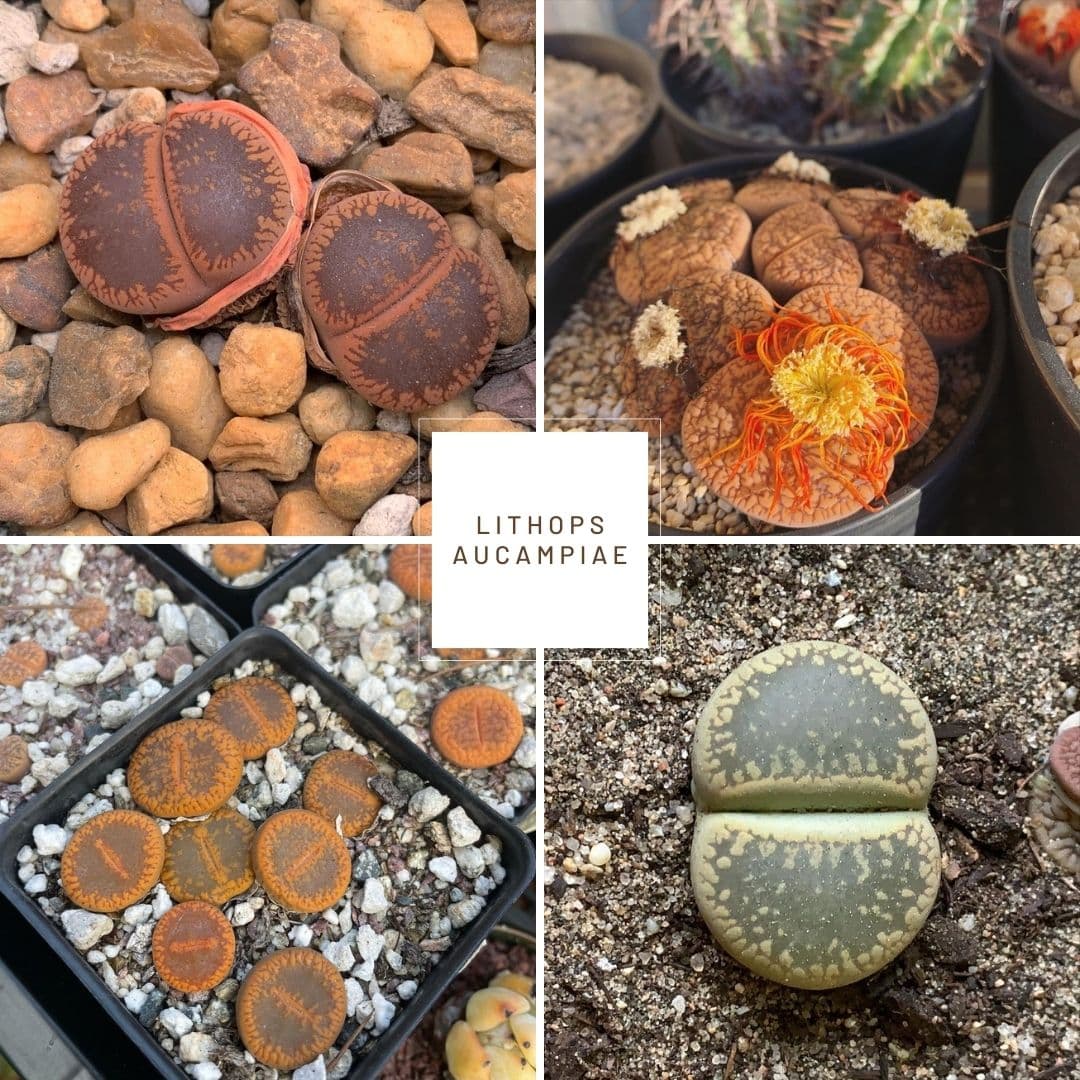Albuca Concordiana
Posted by Grace on August 11, 2023
 Albuca concordiana
Albuca concordiana
Albuca concordiana, also known as Ornithogalum Concordianum, is a plant with flat, strap-shaped leaves and delicate yellow flowers, named after its pale flowers and its origin in Concordia, South Africa.
Quick Facts
- Native Habitat: The northern parts of South Africa 🇿🇦, particularly the Northern Cape Province
- Family: Asparagaceae
- Water: Allow the soil to dry slightly between waterings
- Sunlight: Bright, indirect sunlight
- Soil: Well-draining potting mix
Contents
Why it is called Albuca concordiana?
Albuca is a genus of flowering plants in the family Asparagaceae. The genus name "Albuca" is derived from the Latin word "albus," which means "white" or "pale." This name is likely attributed to the pale or light-colored flowers that many species within the Albuca genus produce. The name "Albuca" reflects the common coloration of their flowers and possibly other parts of the plants.
 The flower of Albuca concordiana
The flower of Albuca concordiana
The name "concordiana" relates to Concordia, South Africa, the location where the original specimen of this plant was gathered.
 Concordia, South Africa, which the name "concordiana" refers to (Source: South African History Online)
Concordia, South Africa, which the name "concordiana" refers to (Source: South African History Online)
The Appearance of Albuca concordiana
Albuca concordiana is a unique and visually appealing plant with distinct features.
Leaves
The leaves of Albuca concordiana are one of its most striking features. They are flat and strap-shaped, giving the plant a distinctive look. The leaves are typically a pale green color and can grow up to several inches in length. Unlike some other Albuca species, the leaves of A. concordiana do not have the characteristic spiral arrangement.
Flowers
Albuca concordiana produces small, delicate flowers that grow on long stalks. The flowers are usually a creamy or pale yellow color, and they have a pleasant fragrance. The flower stalks emerge from the center of the plant's rosette of leaves.
Bulbs
Like many other plants in the Albuca genus, A. concordiana grows from bulbs. These bulbs are usually buried in the soil and store nutrients for the plant's growth.
Confusion with Albuca spiralis and Albuca viscosa
People often mix up Albuca concordiana with two similar-looking plants, Albuca spiralis and Albuca viscosa, because all three have leaves that curl.
But there are differences.
The leaves of Albuca viscosa are more sticky, so sand sticks to them when they're in their natural home. These leaves also don't wrap around the stem below.
 The leaves of Albuca viscosa are more sticky, so sand sticks to them when they're in their natural home. (Source: Operation Wildflower)
The leaves of Albuca viscosa are more sticky, so sand sticks to them when they're in their natural home. (Source: Operation Wildflower)
The leaves of Albuca spiralis are smooth or less sticky, and they do wrap around the stem below.
 Albuca spiralis "Frizzle Sizzle" (Source: By Rhododendrites - Own work, CC BY-SA 4.0)
Albuca spiralis "Frizzle Sizzle" (Source: By Rhododendrites - Own work, CC BY-SA 4.0)
The leaves of Albuca concordiana are flat and strap-shaped, not like the tube-shaped leaves of the other two.
 The leaves of Albuca concordiana are flat and strap-shaped, not like the tube-shaped leaves of the other two. (Source: Reddit)
The leaves of Albuca concordiana are flat and strap-shaped, not like the tube-shaped leaves of the other two. (Source: Reddit)
Care for Albuca concordiana
Caring for Albuca concordiana involves providing it with the right conditions and attention to ensure its well-being. Here's how to care for Albuca concordiana:
Light
Place your Albuca concordiana in a location with bright, indirect sunlight. Avoid direct sunlight, as it can scorch the leaves. A window with filtered light or a spot a few feet away from a sunny window is ideal.
Watering
Allow the soil to dry slightly between waterings. Overwatering can lead to root rot, so make sure the pot has drainage holes to prevent water from accumulating at the bottom. Water when the top inch of soil feels dry to the touch, and adjust the frequency based on the humidity of your environment.
Soil
Use a well-draining potting mix that's suitable for succulents or cacti. Adding perlite or sand can improve drainage. The soil should not hold onto excess moisture.
Temperature
Albuca concordiana prefers moderate temperatures. It can tolerate a range of temperatures, but avoid extreme cold or heat. Keep it away from drafts and sudden temperature changes.
Humidity
This plant doesn't require high humidity levels. Average household humidity is usually sufficient.
Fertilizing
Feed your Albuca concordiana with a diluted, balanced liquid fertilizer during its active growing season (spring and summer). Follow the instructions on the fertilizer label and avoid over-fertilizing, as this can lead to leggy growth.
Pruning
Trim off any dead or yellowing leaves as needed. This will help maintain the plant's appearance and overall health.
Repotting
Repot your Albuca concordiana when it becomes root-bound or when you notice that the soil isn't draining well anymore. This is typically needed every couple of years.
Dormancy
During the fall and winter, Albuca concordiana may enter a period of dormancy where it naturally slows down its growth. Reduce watering and avoid fertilizing during this time.
Pests and Diseases
Keep an eye out for pests like spider mites or mealybugs. If you notice any infestations, treat the plant promptly with appropriate insecticidal soap or neem oil.
By providing these care guidelines, you can help ensure that your Albuca concordiana thrives and remains healthy in your care. Remember that individual plant conditions can vary, so observe your plant's behavior and adjust your care routine accordingly.
Propagation of Albuca concordiana
You can propagate Albuca concordiana using two main methods: sowing seeds and separating offsets from mature bulbs.
Here's how to do it:
Propagation from Seeds
- Collect seeds from a mature Albuca concordiana plant. Let the seed pods dry on the plant and then carefully remove the seeds.
- Fill a seed tray or small pots with a well-draining potting mix.
- Plant the seeds on the surface of the soil and lightly press them in. Don't bury them too deep.
- Mist the soil to keep it moist but not soggy.
- Place the tray or pots in a warm and bright location with indirect sunlight.
- It may take some time for the seeds to germinate. Be patient and keep the soil consistently moist during this period.
- Once the seedlings have grown large enough, you can transplant them into individual pots or your garden.
Propagation from Offsets
- Wait until your Albuca concordiana bulbs have matured and produced smaller bulbs around the base. These smaller bulbs are called offsets.
- Carefully remove the offsets from the main bulb, ensuring you don't damage their roots.
- Plant the offsets in pots filled with well-draining potting mix.
- Water the newly planted offsets and place them in a location with bright, indirect sunlight.
- Keep the soil consistently moist but not waterlogged.
- As the offsets grow and develop their own roots, they will establish themselves as independent plants.
 You can propagate from the bulbs of Albuca concordiana
You can propagate from the bulbs of Albuca concordiana
Remember that Albuca concordiana has a slow growth rate, so be patient as you wait for the propagated plants to grow and mature. Both methods can be successful with proper care and attention.
Need tools for succulent propagation and repotting? Here are my go-to tools: mini tool set (including syringe 💉, gloves 🧤, tweezers 🪤, dust blower 💨, tiny shovels 🛠️) and well-draining mix 🌱.Where to Find Albuca concordiana?
You can purchase the seeds or mature plants through online platforms like eBay and Etsy, and you might also find them available at local plant nurseries.

